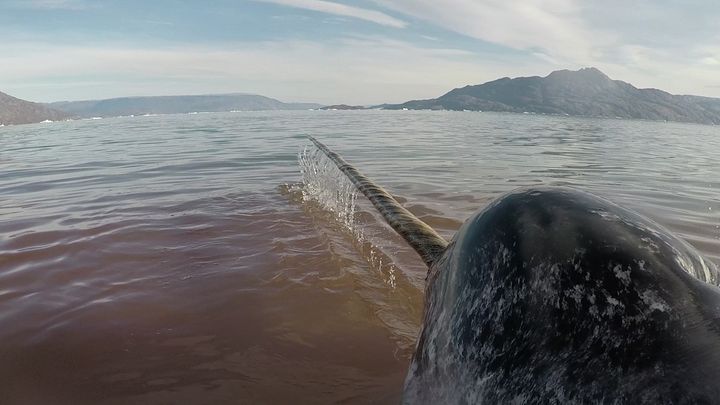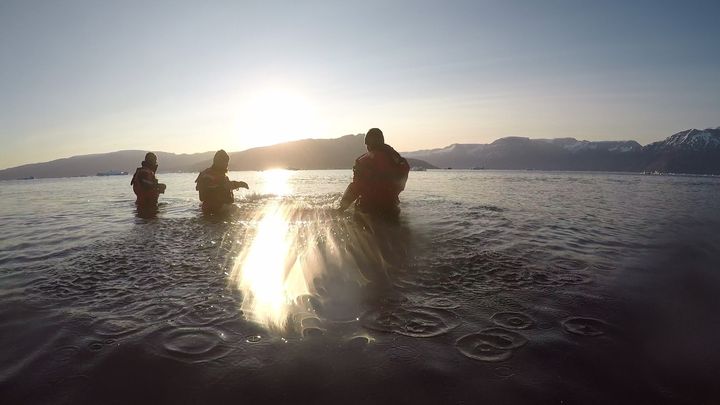
A male narwhal takes a quick breath in Scoresby Sound, Greenland above the Arctic Circle.
Last week my team took the world on a virtual ride on the back of a unicorn. With the publication of our paper in the journal Science, global press, and the magic of a submersible ECG tag that we deployed on wild narwhals, people were able to see and hear these “unicorns of the sea” in ways that they had never before experienced (listen below). We moved the science of narwhals beyond their iconic tusk and into the realm of their beating hearts. The narwhal’s pulse pounded at the same rate as our own and created a visceral connection between people and the secretive, Arctic animal; suddenly there was no denying that unicorns not only existed, they are alive. And it was thrilling.
Such experiences are the driving force that motivates wildlife biologists like myself to try, often against all odds, to save wild animals. To us, narwhals and the other wild animals of the lands and seas are not flat pictures in books or videos on a screen. They are living creatures that recognize the difference between success and failure, hunger and satiation, calm and fear. We can smell their latest meal on their breath and feel the heat of life on their skin. In other words, they are just like us.
However, there is a dangerous side to experiencing the wild in such a personal way. When our incredible tags record the last heart beat or the last steps of an animal, we enter a level of scientific intimacy and devastation that few know. We bear witness to the struggle between the wild and a man-made world; suddenly we are face-to-face with our failure to save that individual and in some cases an entire species. There are no words that heal, and scientists don’t cry. It is a cruel fate that biologists are trained to remain rigidly detached, only to become passionately entangled in the daily lives and deaths of the animals they study.
But we carry on. We do so despite the war on science and scientific funding in Washington, the shrinking of protected areas for wild animals, and the wholesale giveaway of their homes on land, along coastlines, and in the oceans for development. Ultimately, we risk our family relationships, our livelihood, and our lives for one reason- to give a voice to wildlife.

A narwhal splashes goodbye to our research team as it heads into deeper waters at sunrise.
We do this because we have touched Nature, and few other encounters will ever be more exciting, extraordinary, or inspiring. More importantly, we carry on because we know that this wild world was created by a greater hand than man’s. And all humans were born to share in its wonders.
More than ever we need Nature.
As the Christmas carol instructs, “let Heaven and Nature sing” in your beating hearts, knowing that there are biologists out in the wild working for you. We are watching over your planet, and guarding the wild animals that raise your pulse from the mundane to the extraordinary with their beauty. This is our gift to you. In return, give yourselves the greatest gift ever created for you and your family, Nature. Go to parks, zoos, arboretums, the beaches, the forests, and the mountains. Enjoy it all and protect it. And should you be inspired, hug a wildlife biologist. Because together, we can keep the hearts of wild animals, including Earth’s last living unicorns, beating far into the future.